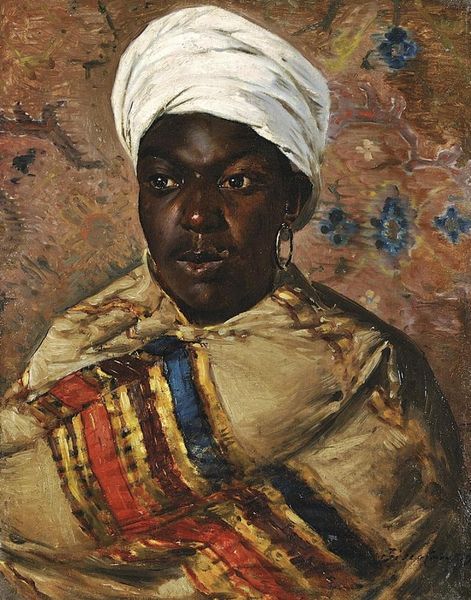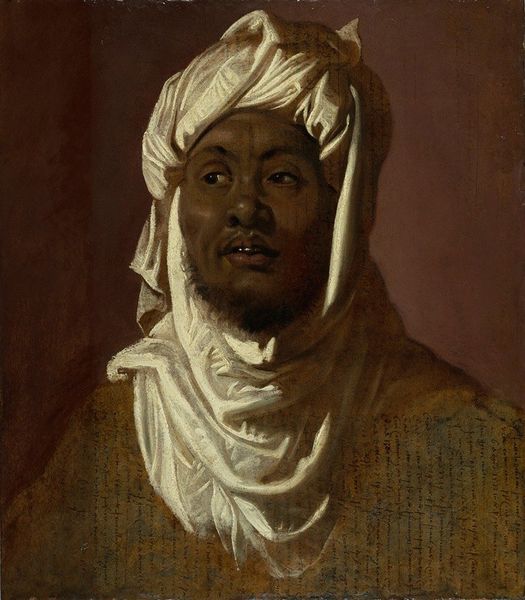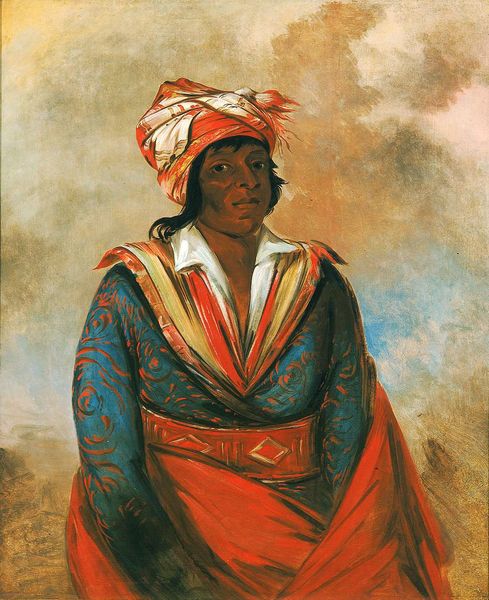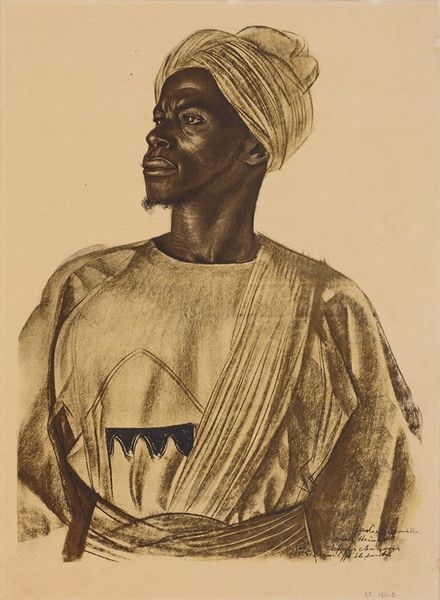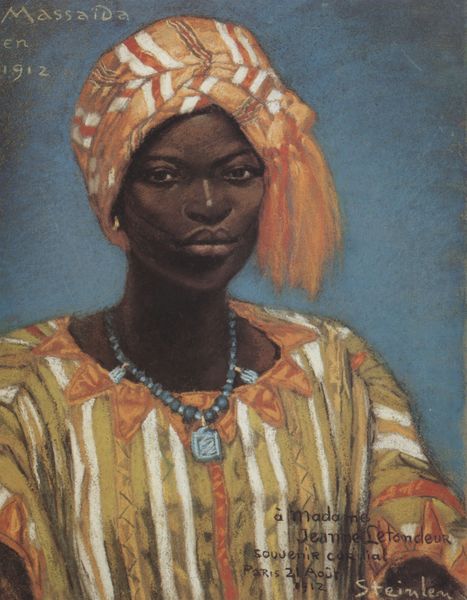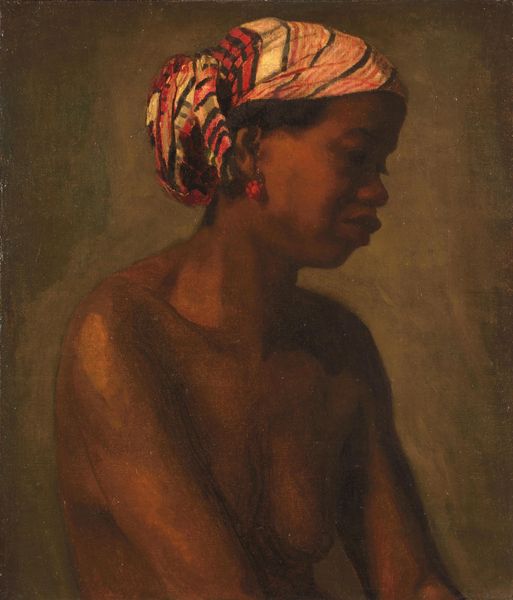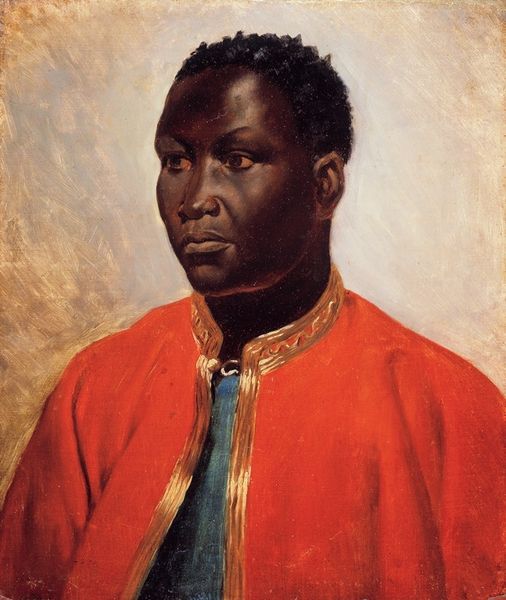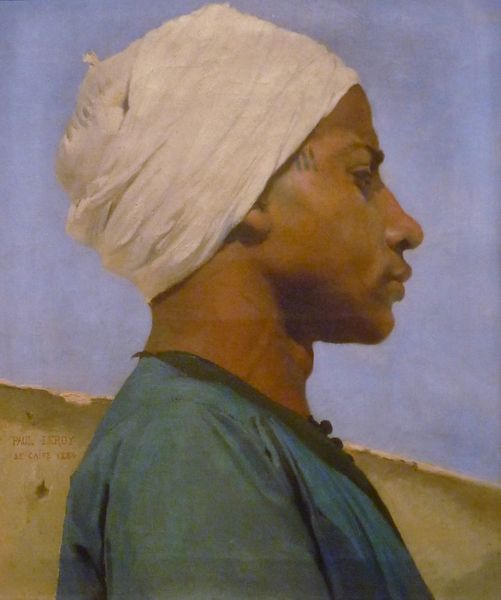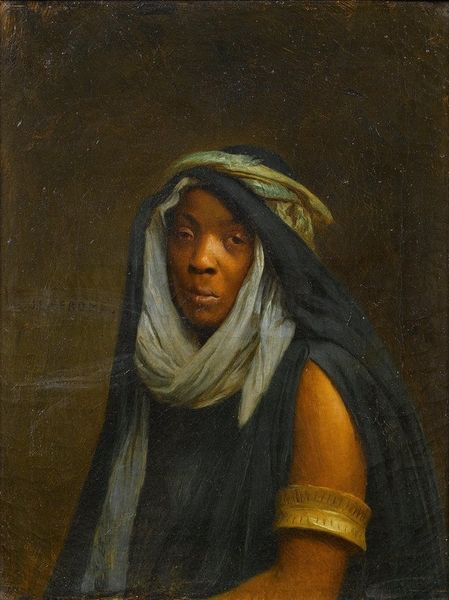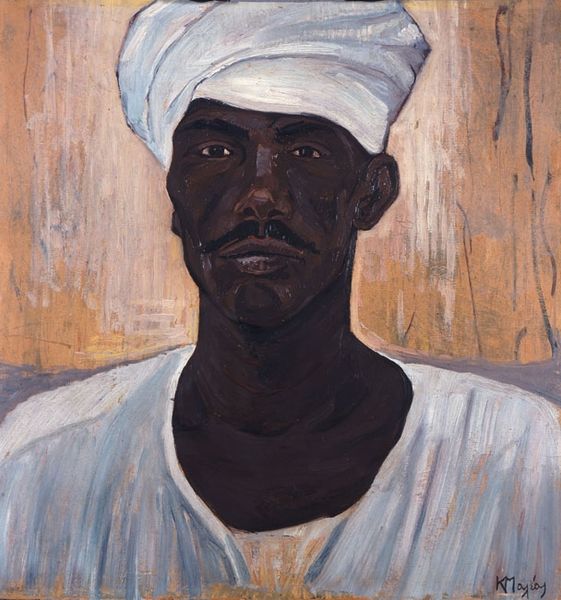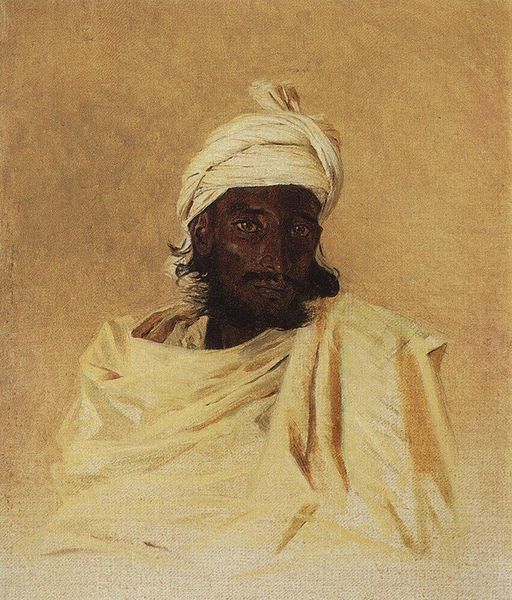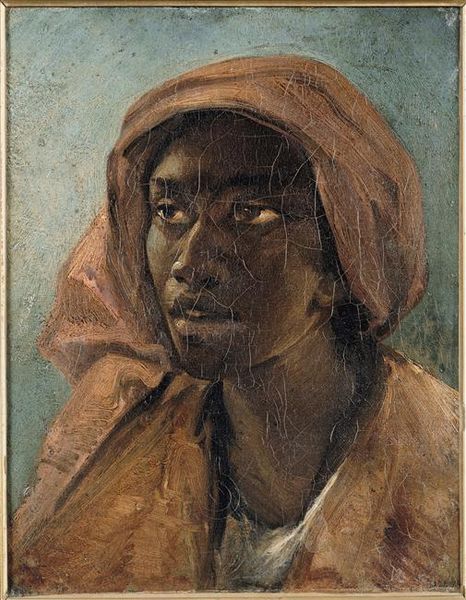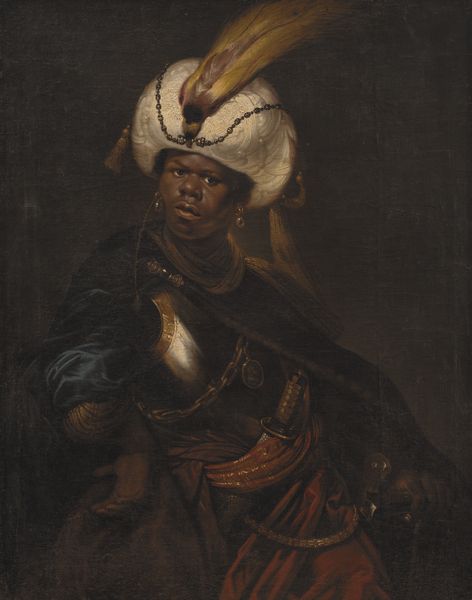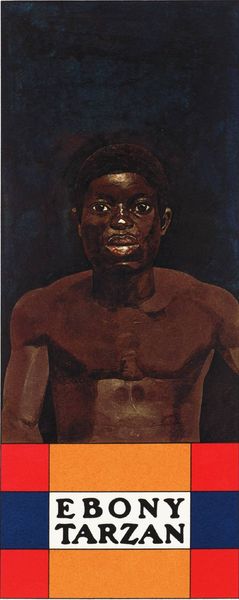
drawing, pastel
#
portrait
#
drawing
#
figuration
#
romanticism
#
orientalism
#
pastel
Dimensions: 47 x 38 cm
Copyright: Public domain
Editor: This is Eugène Delacroix's "Portrait of a Turk in a Turban," created in 1826 using pastel. It's captivating, the gaze feels very direct. What stands out to you about the cultural and psychological impact this image might have had, and continues to have? Curator: Delacroix’s "Turk" isn’t just a portrait, it’s an invocation of the 'Orient' – a loaded symbol for European fantasies of the exotic and mysterious. Consider the turban: beyond mere headwear, it signified cultural otherness, power, and even threat, shaped by centuries of interaction, conflict, and projection. Does the subject's direct gaze challenge or conform to these stereotypes, do you think? Editor: It’s complex. There’s dignity, but it's also undeniable that he’s been cast within a specific, romanticized European lens. Curator: Exactly! That tension is where the cultural memory resides. Delacroix is consciously – or unconsciously – participating in a visual dialogue about power, identity, and representation that stretches back centuries, informed by everything from travel narratives to political rivalries. It shows us how perception is coded, not objective. What did you think about how the technique helps convey that? Editor: The soft pastels and the detail in the face versus the sketchiness of the clothes create an interesting juxtaposition. Curator: Indeed. That juxtaposition almost underscores the selective seeing at play here. We focus on what we want to understand and possess through looking. Editor: That makes so much sense, seeing it that way really changes my understanding. Curator: And understanding the visual cues helps us interpret the continuing resonance and occasional misinterpretations.
Comments
No comments
Be the first to comment and join the conversation on the ultimate creative platform.
